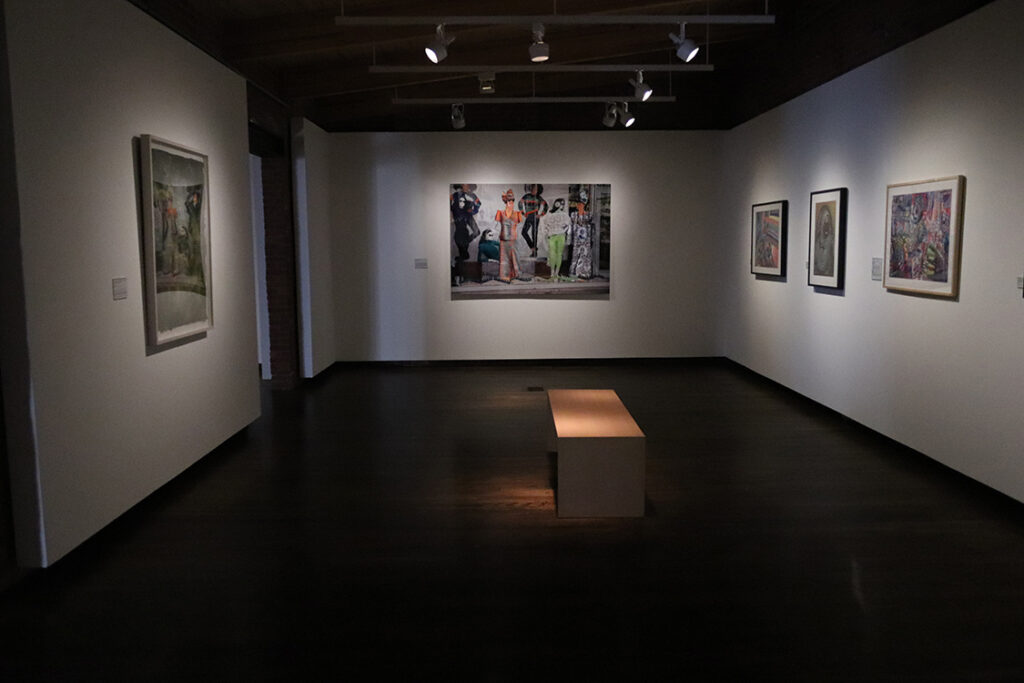
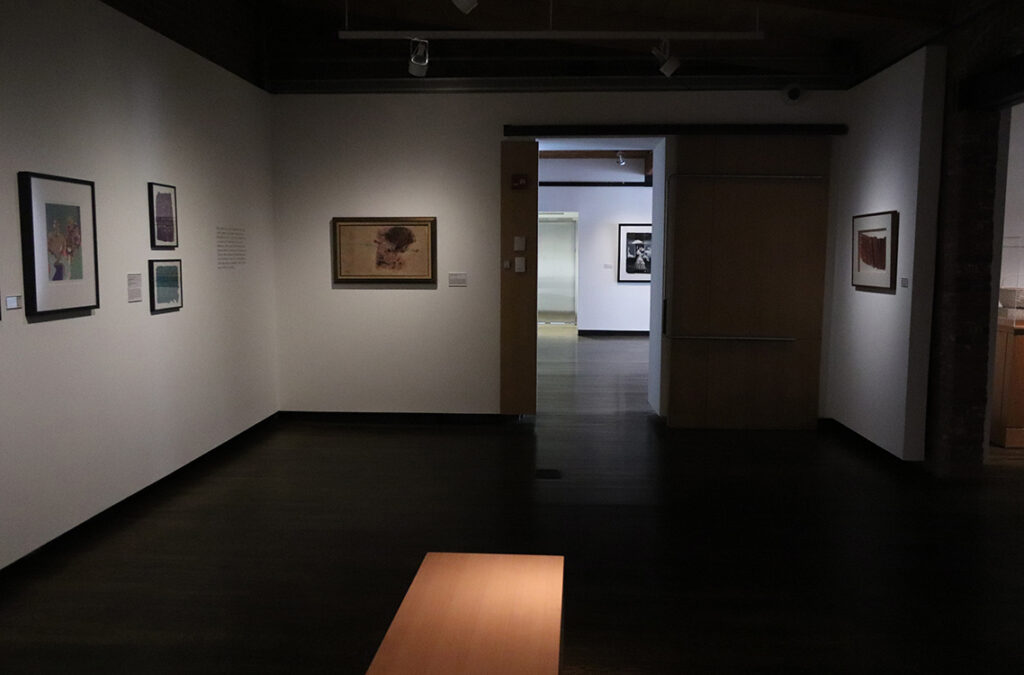
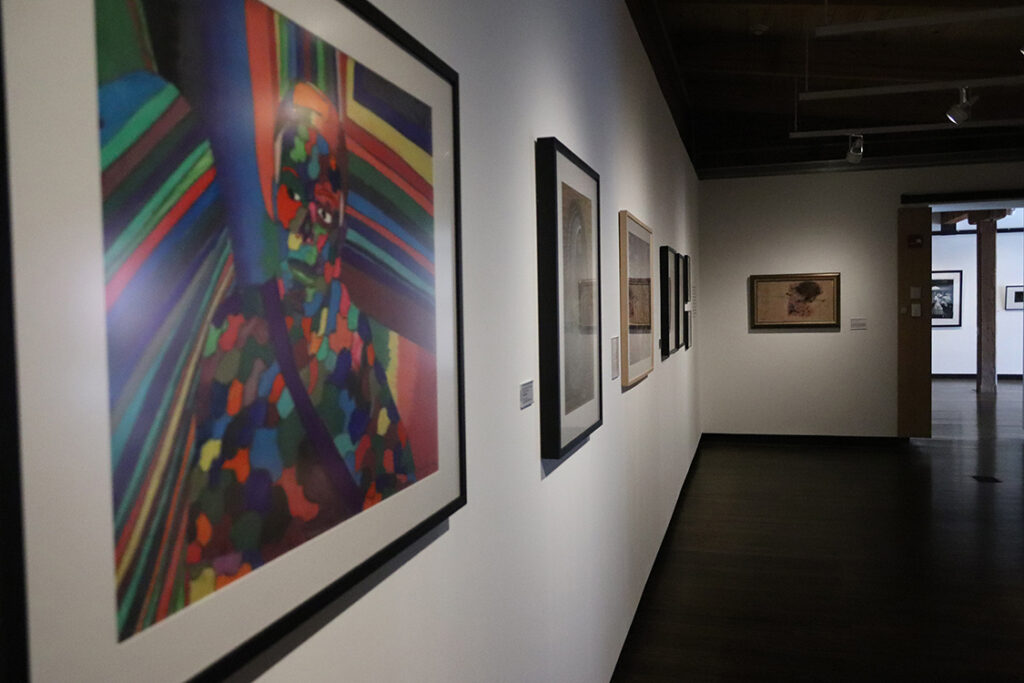
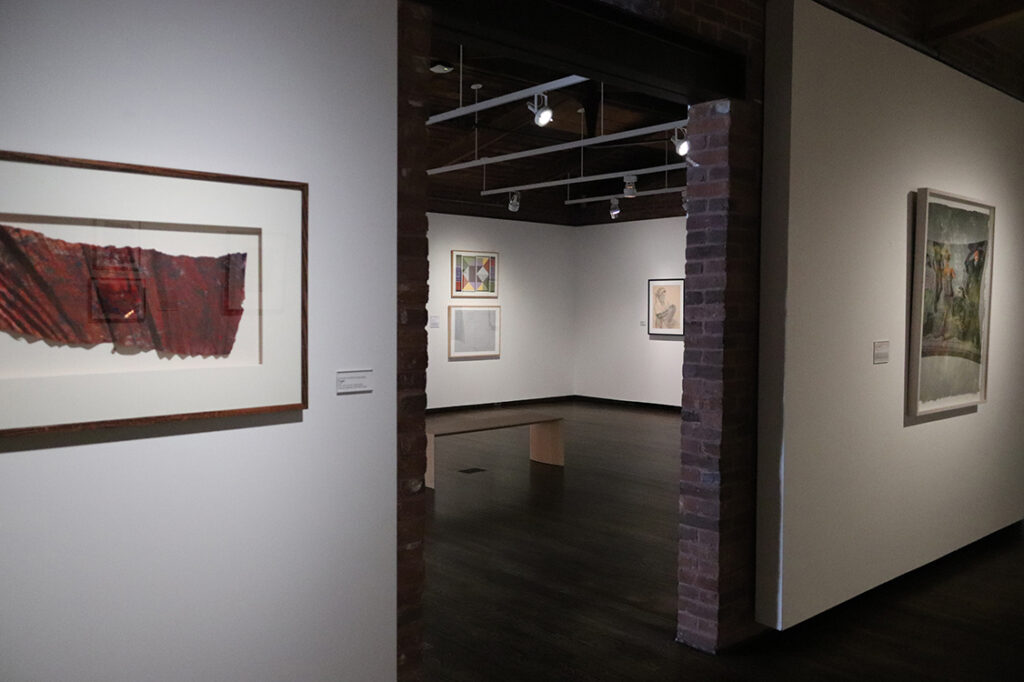
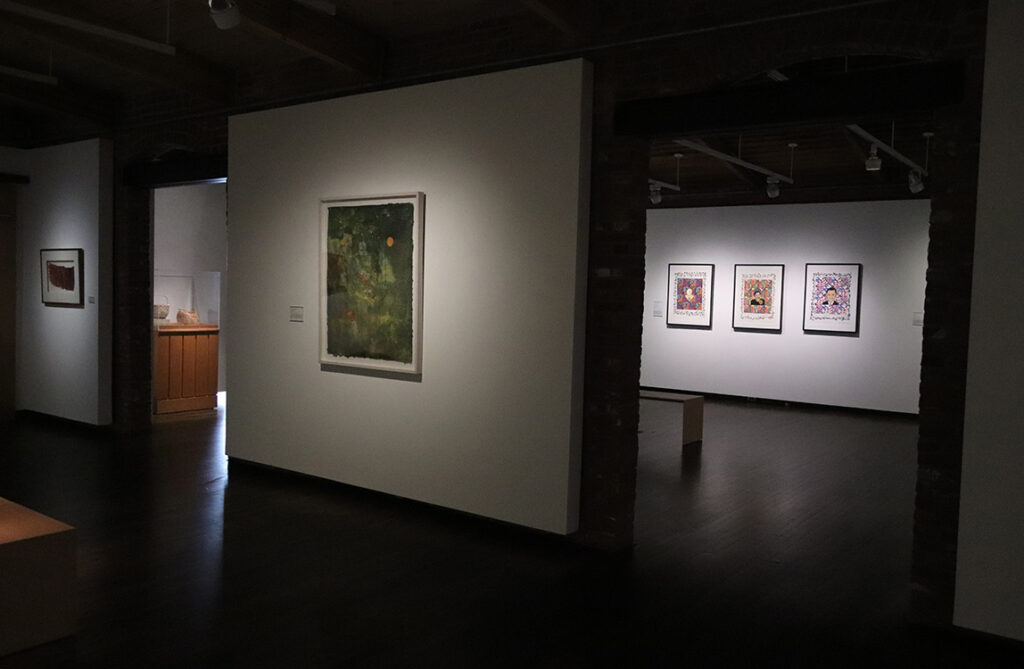
Many artists in this gallery texture their work with colorful patterns. The patterns in pieces like the lithograph by Frank E. Smith, who describes his art as a process of “intensification,” vibrate with exuberance. Other artists, like Ellen Banks, show measured restraint. Geometric textiles inspired many of these patterns, shaped by the alternating warp and weft threads of woven fibers. By emphasizing surface decoration and materiality, artists create a sense of tactility and feeling.
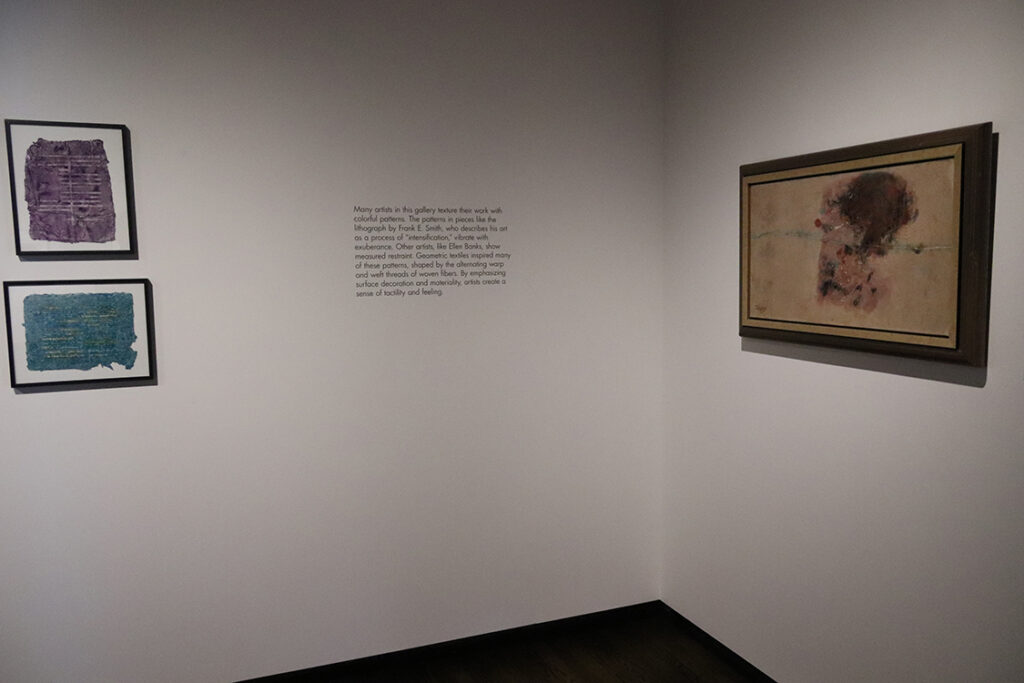
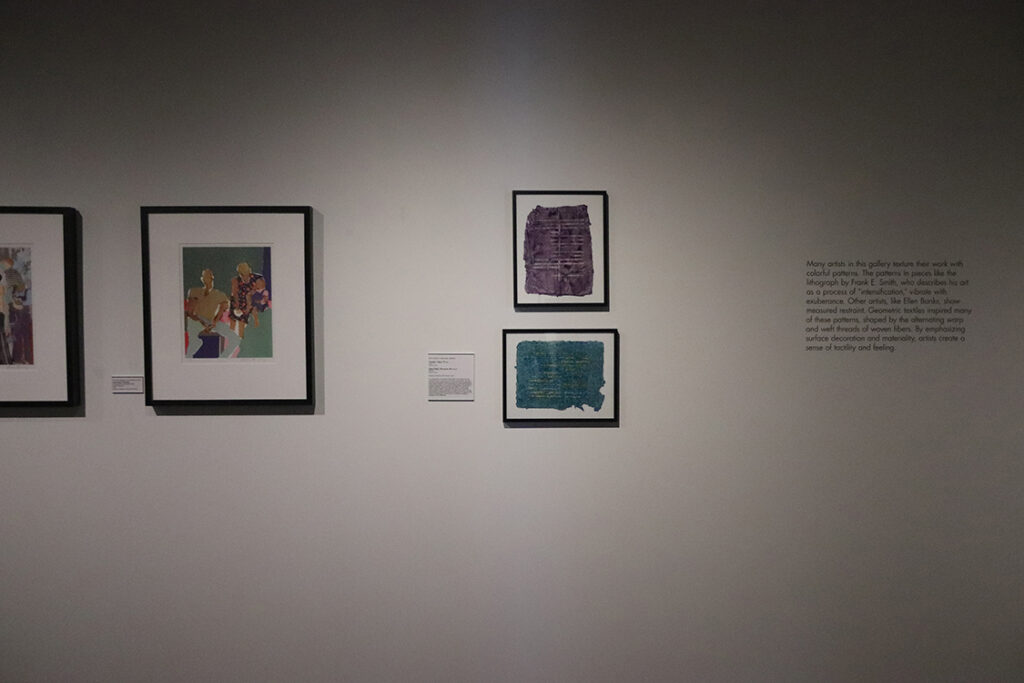
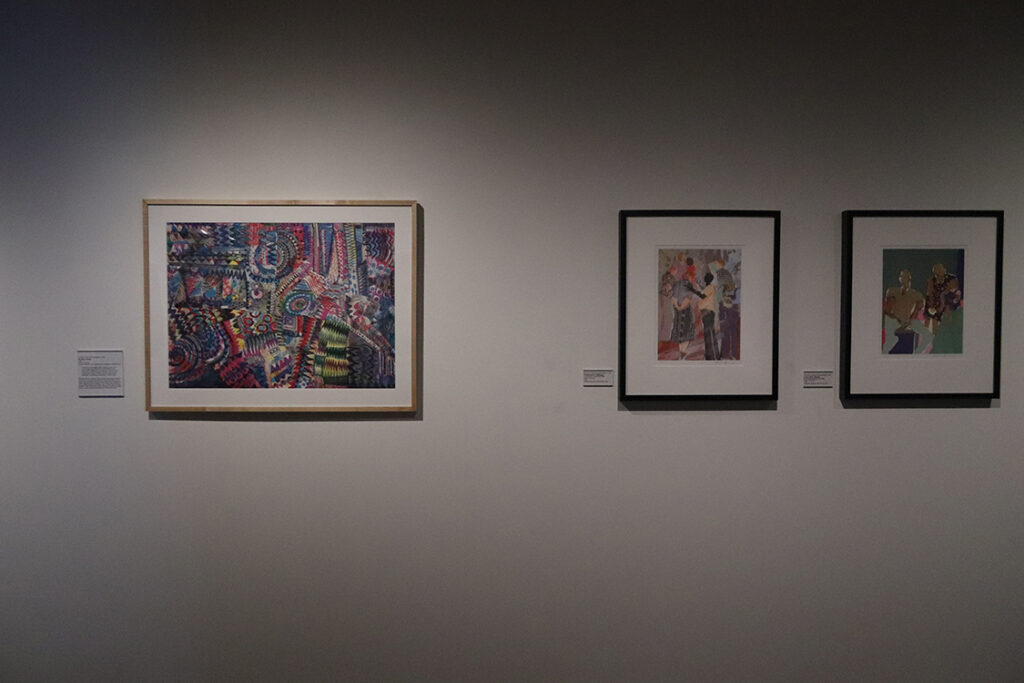
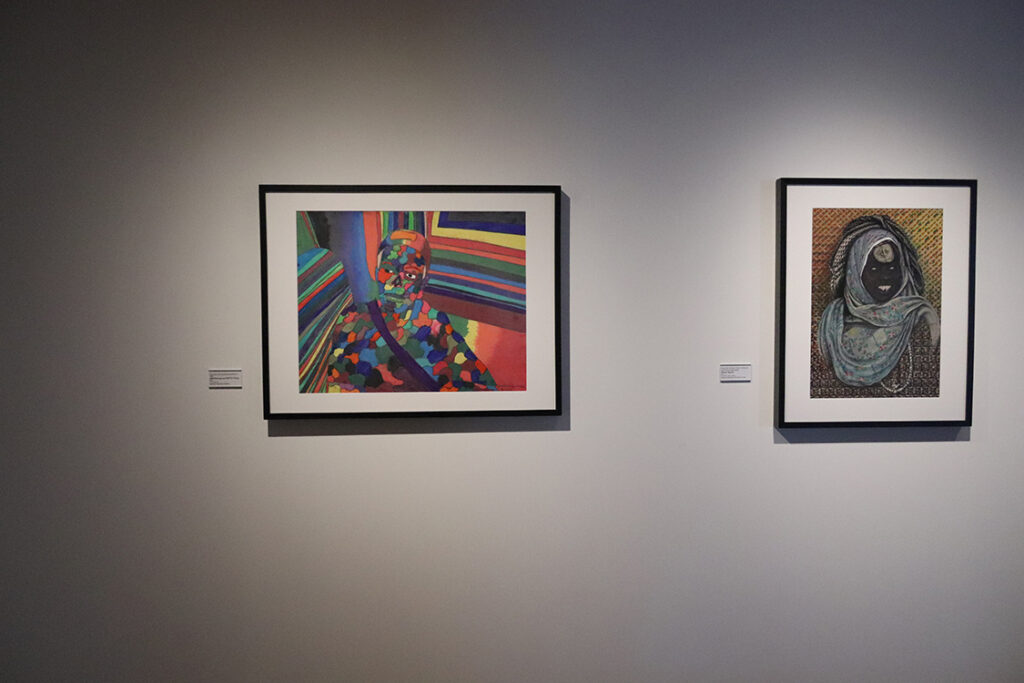
22.
Leo Franklin Twiggs (United States, b. 1934)
Low Country Landscape
1974
Batik
Museums Collection, Gift of Paul R. Jones
Batiks are made with successive layers of wax painted onto cloth to create a “resist” that prevents dye from sinking into the fabric. Leo Franklin Twiggs began by painting the horizon line in wax. Because of the way batik dye penetrates the fabric support, Twiggs was able to saturate the form of the tree with many layers of color. Twiggs was a professor at South Carolina State University in a region called the Low Country. In his work, he often confronts symbols of white supremacy. The single tree, blooming darkly like a bruise, could refer to the history of lynching in the American South.
23, 24.
Ellen Banks (United States, 1938-2017)
Chopin, Opus 70 (top)
1988
Mixed media
John Field, Nocturne #8 (bottom)
1987-88
Mixed media
Museums Collections, Gifts of Paul R. Jones
As a visual artist and musician, Ellen Banks was intrigued by the notational system used to record musical compositions. The clean lines and square grids of these two works are visual interpretations of the music notation for the musical piece in each title. Despite her interest in abstraction, her pieces are emphatically material. Banks begins by beating cotton and other plant fibers to make these uneven sheets of paper. Using tape, she lays down the graphic representation of the composition. The paint comes after, running and pooling to highlight the texture of the paper. She makes similar works by knitting yarn, working with the material’s qualities to represent music differently.
25.
Phoebe Beasley (United States, b. 1943)
Aunt Sue’s Stories
from Sunrise is Coming After While
Offset lithograph
1988
Museums Collections, Gift of Paul R. Jones
26.
Phoebe Beasley (United States, b. 1943)
Daybreak in Alabama
from Sunrise is Coming After While
Offset lithograph
1988
Museums Collections, Gift of Paul R. Jones
27.
Frank E. Smith (United States, b. 1935)
Be Bop Vamp
1986
Offset lithograph
Museums Collections, Gift of the Brandywine Workshop, Philadelphia, PA
“I believe in intensification, that’s using particular colors at their highest level of intensity. Red is different from pink, which is different from maroon but it’s all red. When I use red, I use red at its highest intensity. I like the word intensification. When the white world was talking about minimalist, I was thinking maximizing.” -Frank E. Smith
Frank E. Smith is a member of the Chicago-based artistic collective the African Commune of Bad Relevant Artists (AfriCOBRA). These artists draw inspiration from Black style and the African diaspora to foster solidarity and self-confidence. The creative improvisation of forms in this lithograph riff off each other in a tight weave of bright patterns. Smith works across media, painting on canvas and making prints as well as creating soft sculptures that resemble quilts.
28.
Imaniah Shinar (born James E. Coleman) (United States)
Ebony Queen
2001
Graphite, color pencil
Museums Collections, Gift of Paul R. Jones
29.
Geraldo Gonzalez (United States, b. 1989)
Self-Portrait on SEPTA Train
2016
Color pencil
Museums Collections, Purchase
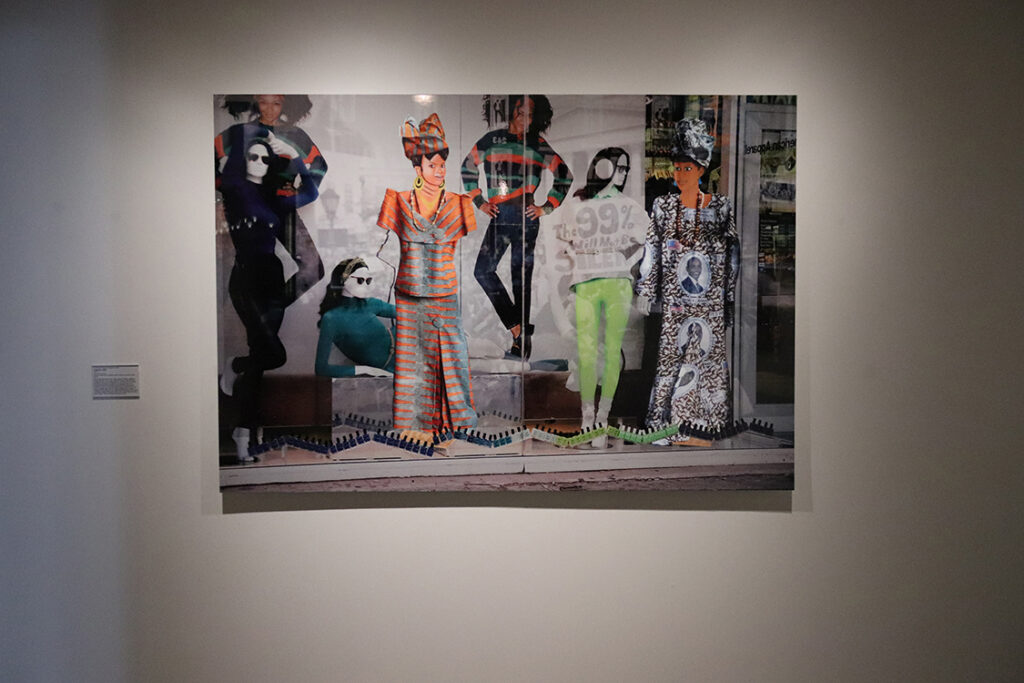
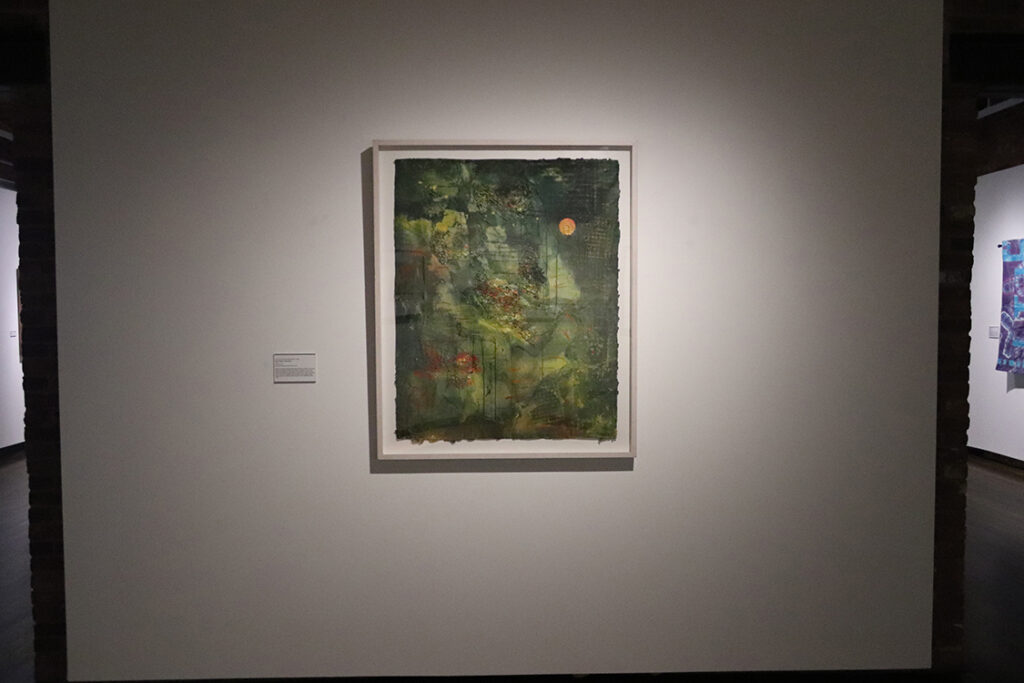
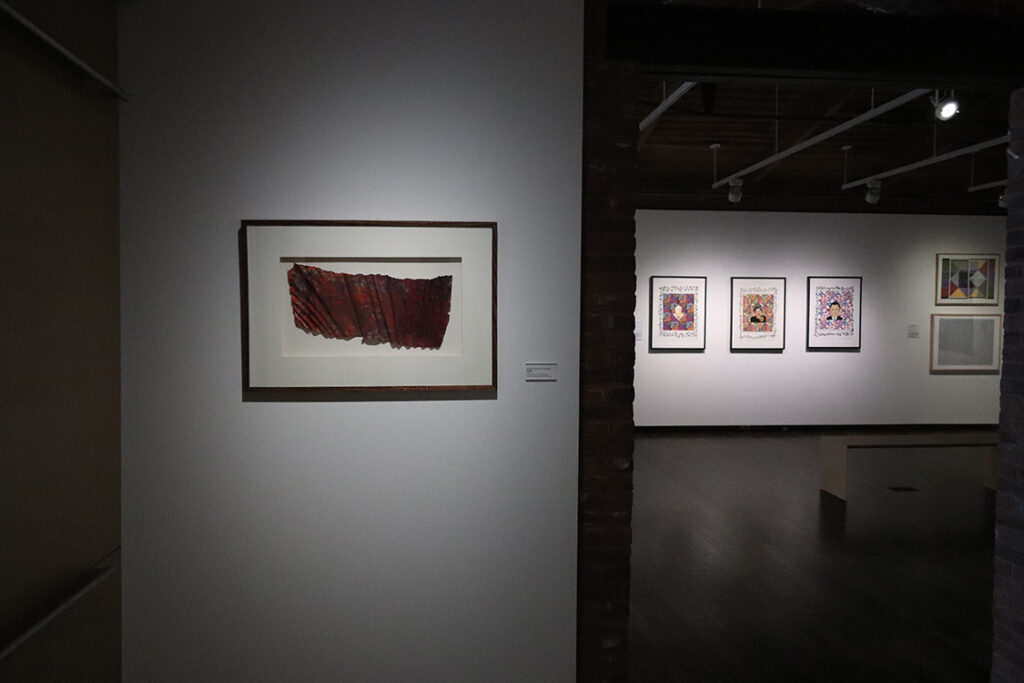
30.
Fatimah Tuggar (Nigeria, b. 1967)
Voguish Vista
2012
Computer montage
Museums Collections, Donated by Artist in Honour of curator Dr. Julie McGee
The recognizable logo of the clothing store American Apparel is visible, reversed, in the upper righthand corner of the storefront in Voguish Vista. American Apparel was well known for the tightly fitting, monochromatic clothes the mannequins wear in the background. But the beautifully patterned dresses and turbans of the two women in the front suggest that not everything is as it seems. Nigerian artist Fatimah Tuggar digitally layers imagery to create what she describes as an “alternative imaginary” to the world we inhabit. Boldly holding the center of the scene, the two women seem to ask, “What is ‘American’ apparel anyway?”
31.
Carl Christian (United States, b. 1954)
Evening in Summer
1999
Mixed media
Museums Collections, Gift of Paul R. Jones
Bunches of string caked beneath paint make the surface of this work seem to wriggle and writhe. Carl Christian suggests a sun in lurid yellow and orange but then adorns the circle with a soda-can tab. These unexpected materials texture the painting’s surface alongside drips of paint and imprinted grids. Christian layers burlap, rough paper, and other media to draw attention to the materiality of his work.
32.
Samuel Guilford (United States)
Flight
1999
Watercolor, acrylic, folded paper
Museums Collections, Gift of Paul R. Jones

